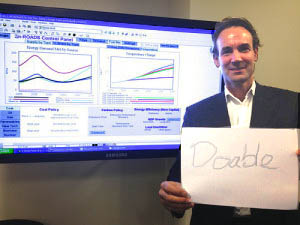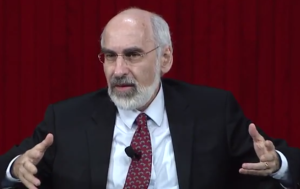
“That’s another way we can ensure that traditional skills are passed on!”
“If we modify the program we can include that whole group of kids we were forgetting!”
“Should I invite the funders to come to the village from the start? Even if it’s not perfect they could see where they could help.”
Exclamations like these are the reason I always come back to teaching systems thinking. There’s just no sweeter pleasure than watching someone’s moment of breakthrough insight, especially when the breakthrough holds within it the potential of bigger, faster or better results “at the intersection of peace, justice, and ecology.” That intersection is where the Dalia Lama Fellows work, learn, dream, and experiment, and their playground became my own for a day when I had a chance to introduce the newest class of fellows to the basics of systems thinking.
We gathered together at a retreat center in the hills of Northern California far from their homes in Africa, North America and Asia—and far from my own in Vermont—for a six-hour introduction to vision, stocks, flows and feedback loops as a taste of a body of knowledge they could pursue at home through books, articles and classes like the Climate Leader.
With each fellow immersed in the design of the service project that will be a key part of their fellowship year, I was hopeful that systems thinking would help them see new possibilities and avoid potential pitfalls as they roll out their projects.
Teachers always learn as much as students in settings like this, of course, and a few lessons seem particularly worth sharing as we at CI are investing more energy than ever in making systems thinking training available to a global audience via the Climate Leader.
Continue reading →








